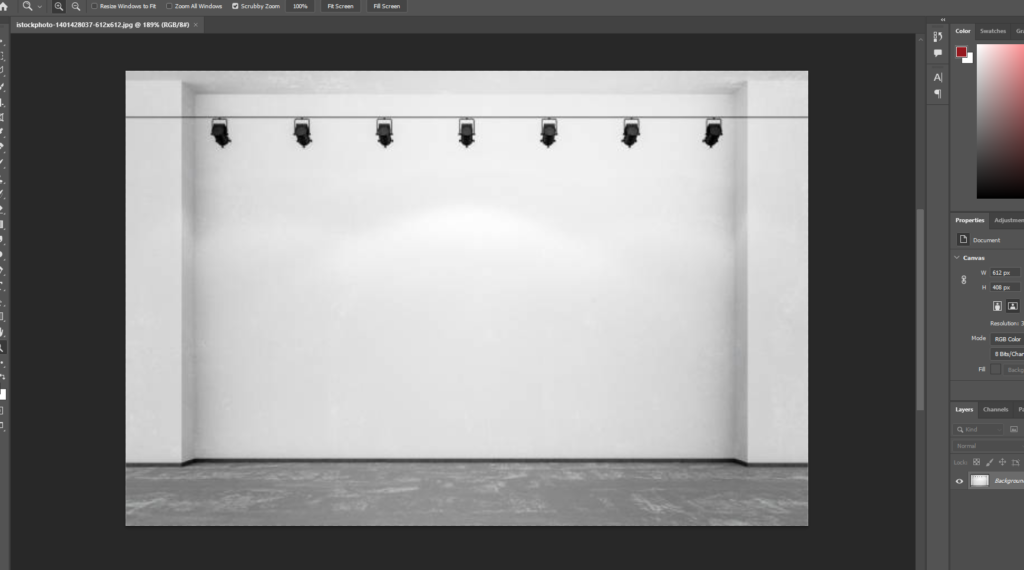
(insert writing/description)
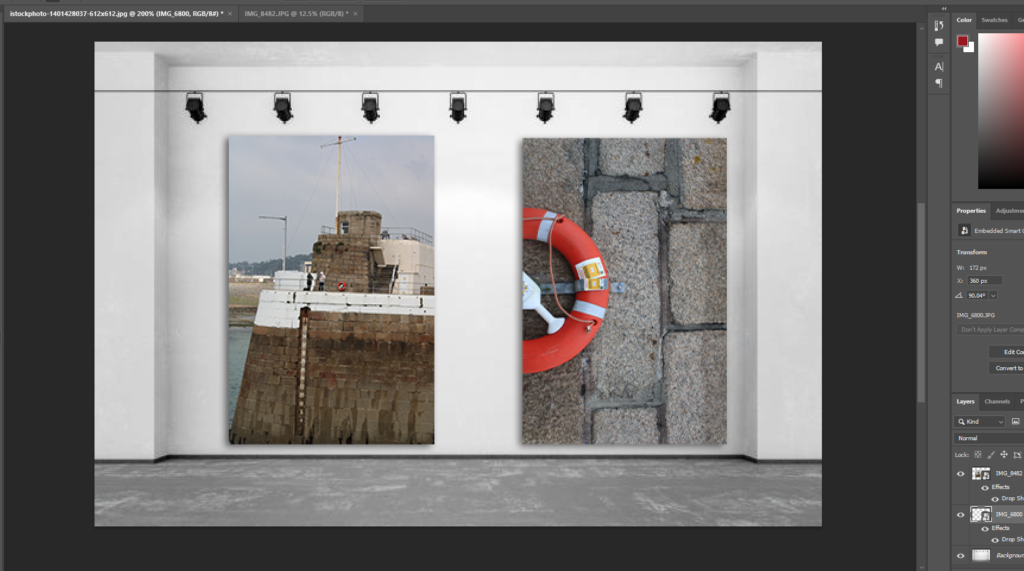
(insert writing/description)
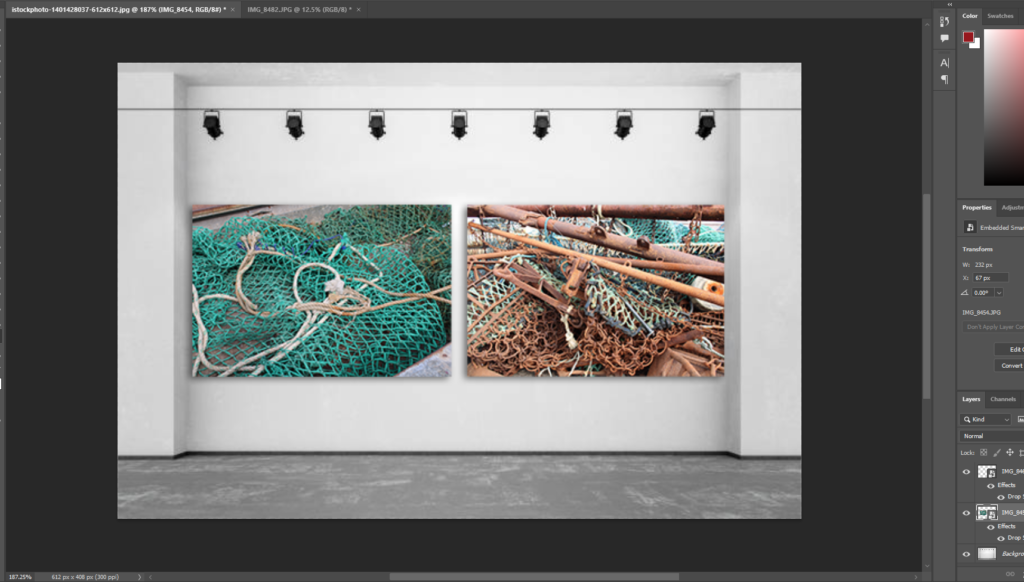
(insert writing/description)
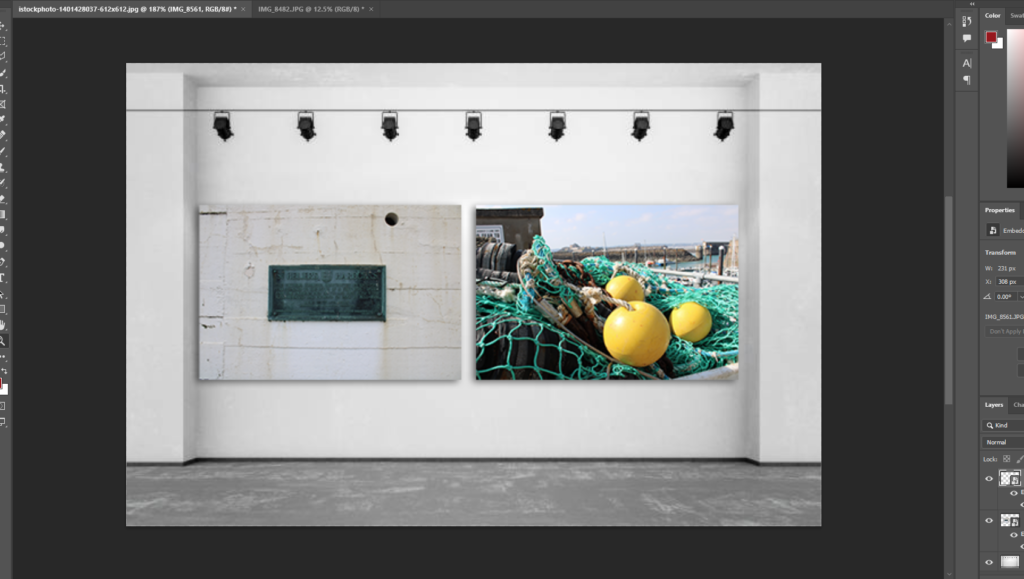
(insert writing/description)

(insert writing/description)

(insert writing/description)

(insert writing/description)

(insert writing/description)
What are the differences between photographs that are WINDOWS and MIRRORS?
Photographs that are considered MIRRORS:
Mirror photos are usually called this when the photographer is trying to demonstrate or reflect something that they feel about themselves. John Szarkowski in his text, said a mirror is “reflecting a portrait of the artist who made it” and “a mirror- a romantic expression of the photographer’s sensibility as it projects itself on the things and sights of the world”. Mirrors in photography reflect or represent reality or emotions. The image that is considered a mirror doesn’t usually include everything, it only captures what the photographer chooses to show and then allows to the viewer to interpret it from there. Mirrors in photography can be used to show identities and personal opinions and thoughts. like an actual mirror, they can be used to reflect how we see ourselves. they provide reflections of internal and external meanings and influence the way we perceive ourselves or what the photographer wants us to see. overall mirrors are not just a direct reflection, photographs like this are able to share deeper meanings and allow the viewer to be subjective with how the interpret the meaning.
Photographs that are considered WINDOWS:
Window photos are usually called this when the photographer takes images where they try to demonstrate their opinion and how they feel about the outside world. John Szarkowski said a window is “through which one might better know the world” and “through window which the exterior world is explored in all its presence and reality”. a window photograph are able to provide a view into another world where both an objective and subjective perspective can be shown. it shows the view of a moment in time which we don’t experience ourselves. this could be things such as a different culture that isn’t ours showing that we wouldn’t experience this moment however we are getting a view into someone else’s reality. windows may sometimes bring across an emotional aspect where the viewer feelings certain feelings towards the image and what is going on as they experience a glimpse of someone else’s reality. this is importantly used in documentary photography where images are windows to historical events like the wars and how whoever views the photograph now is not currently living that historical period and so its a look into the past and therefore a different reality.

Example of MIRRORS
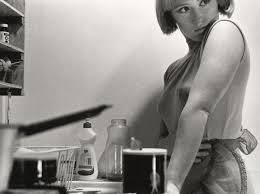
This is an example of a mirror. I chose this image as first of all it is a self-portrait so it is already showing personal views from the photographer and not of something/someone else. the individual is acting as the subject as well as the photographer. The image reflects on society expectations of women identity and roles. though her images reflect herself they are also reflecting many other individuals realities and the societal ideas.
Example of WINDOW
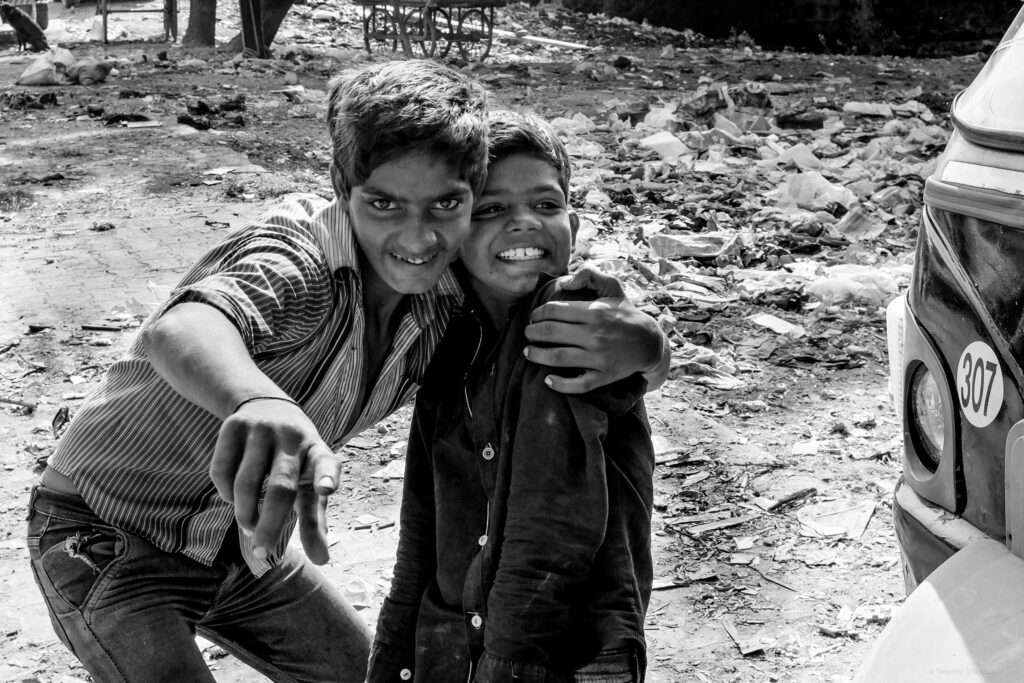
This image was taken on a photographers trip to India. I considered this a window image as the photographer is not from there so they aren’t ‘mirroring’ their own life but instead showing a representation of something else. The image is very real and factual as it’s showing their environment and life through the image. The focus is on the two boys however the boys juxtapose their surroundings. The boys are seen to be quite happy and excited to be involved in the image but in comparison to that their background seems like an unhealthy environment to live in.
How can photographs be both ‘mirrors’ and ‘windows’ of the world?
In the 19th century, the art of photography started to develop into what it is today. Louis Daguerre was a French artist and photographer who became known for his invention of the daguerreotype – a process of photography which is done with a silver-plated copper plate transferred to the camera after going through a particular procedure. After exposure to light, the plate was developed over hot mercury until an image appeared. Not long after this process was invented, William Henry Fox Talbot came out with the calotype which is a photographic process done by iodising a sheet of writing paper by applying different solutions under candlelight before washing and drying it. Then, you would sensitise the same surface and dry the paper and load it into a camera obscura, exposing it to light. After, you would remove the paper and use the same sensitising solution to develop the image. Lastly, rinse the negative with water, wash it with a solution of potassium bromide, and rinse it again before laying it out to dry. The difference between these two photographic ways, is that the calotype process first produced a ‘negative’ in the camera which many ‘positive’ calotypes could be made, whereas daguerreotypes were a one-off image. According to John Szarkowski, the images produced from both of these processes would be considered windows. This is because, the photographs would depict views of the outside world, trees, houses, hills etc. which is then giving the viewer another way to look at this view, causing it to be a window as the only thing you are seeing are external factors. They would also be portraits, continuing to make these classified as a ‘window’ as portraits portray a person (or people) in their state, peering into their life. John Szarkowski wrote, ‘The distance between them is to be measured not in terms of the relative force or originality of their work, but in terms of their conceptions of what a photograph is: is it a mirror, reflecting a portrait of the artist who made it, or a window, through which one might better know the world?’. I think this view of photography can be considered a good one however, photography is so subjective and without context, it can be hard to surmise whether a photograph is a ‘window’ or ‘mirror’.
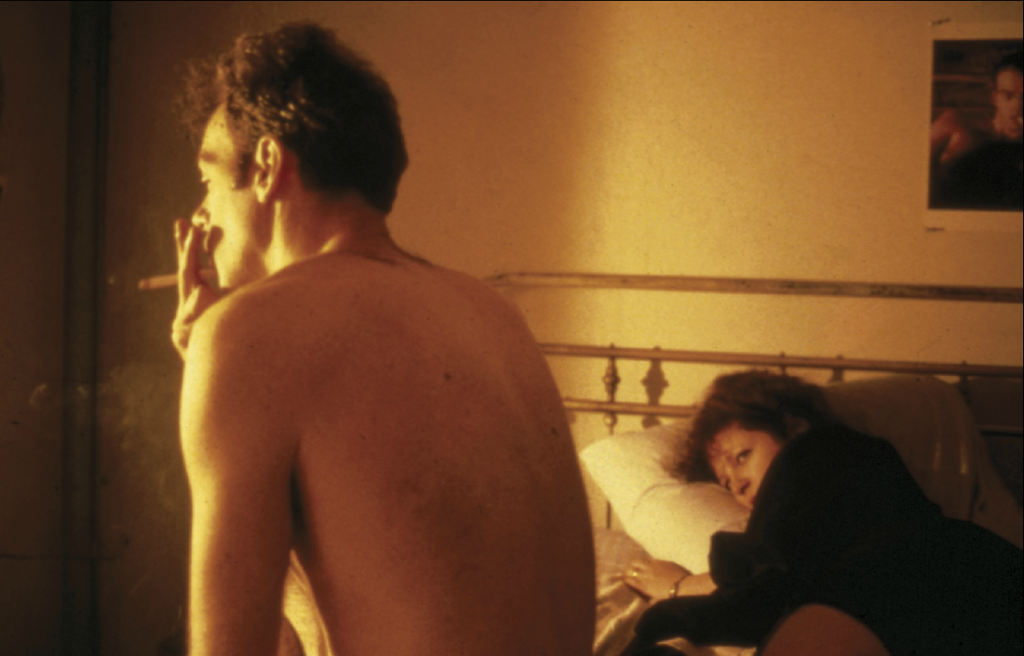
– Nan Goldin
This image above, would be considered a ‘mirror’ image as it is a staged photograph of Nan and Brian in bed. As the photographer is in the photo, this image is reflecting her in, what we would assume, her natural environment. It is a subjective photo, there are different ways in which someone might observe this image, for example the story and meaning behind it can be interpreted different.
Jed Pearl’s review of Mirrors and Windows suggests that Szarkowski’s view of photography, ‘windows and mirrors’, is a binary theory which Szarkowski claims isn’t a fixed pattern but a “continuous axis”. Although he says this, his thesis still suggests that photographs only fit into these two categories. Photographs can be a ‘mirror’ reflecting the artist, who they are, what they stand for etc. and they can also be ‘windows’ – a way to show the world in another view and to document the external environment. But, photographs can also be a mix of both, photographers all have different intentions for their photographs and why they are taking them or why they are photographing their subject, making them fit into one category, both categories, or neither.
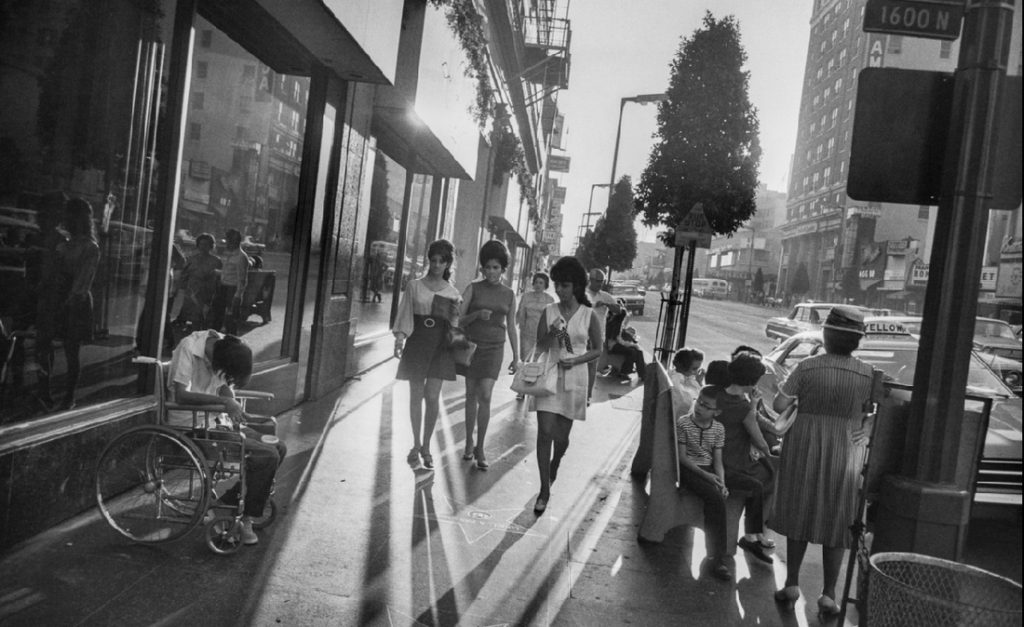
– Garry Winogrand
This image presented above, is what would be viewed as a ‘window’. This is because the image is capturing a real moment in time, including many different people and their different lives. The focal point I would say, is the three women walking in the centre of the street, the centre of the image. Our eyes are drawn straight to them and from this one image we can make assumptions about their lives and who they are. We can see the three women looking to the left of the image where we see a young man in a wheelchair, however with him, there isn’t much for the viewer to learn about him, leaving us wondering about his life. The last group of people in the foreground, is what appears to be a family sat on a bench although we can only see the little boys face and none of the others. This image isn’t portraying the photographer, it is a raw moment experienced by all of these different people, looking into their own lives.
To conclude, Szarkowski’s view of photography, ‘the distance between them is to be measured not in terms of the relative force or originality of their work, but in terms of their conceptions of what a photograph is: is it a mirror, reflecting a portrait of the artist who made it, or a window, through which one might better know the world?’, could be a nice way to look at photography as it is able to group images together or differentiate between them. However, I think that we should use this viewpoint as photography is such a subjective concept, even when images are objective, they can be taken in and interpreted differently from person to person. If a photographer wants to present their image in a certain way or in either of these categories (windows and mirrors) then it is a good way for them to do so but that isn’t always the case.
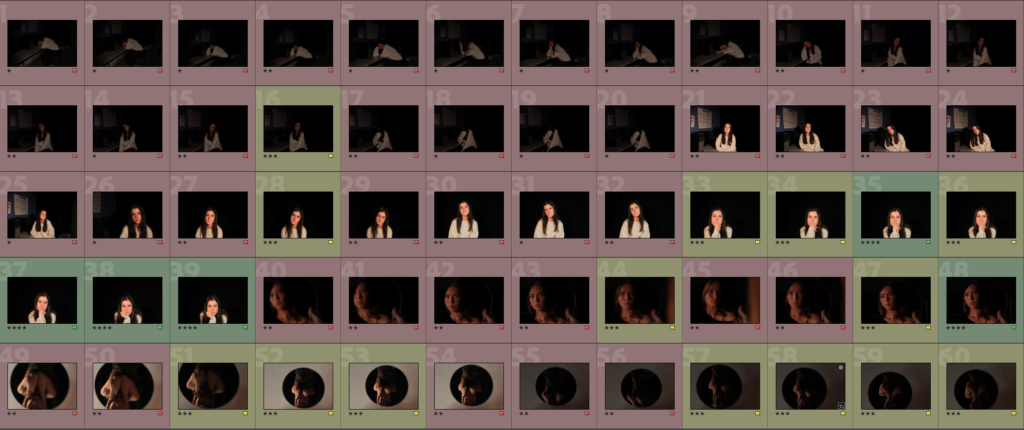

For this photoshoot, I experimented with a variety of different poses, which I thought somehow reflected me and my emotions in that moment. I don’t like some of the photos I created, as I felt they were a bit rushed and could’ve been improved through the angles and lighting.
I did like this project because I felt like it was different to my other ones, but I think it was quite difficult to successfully produce images which shows a clear story within it.





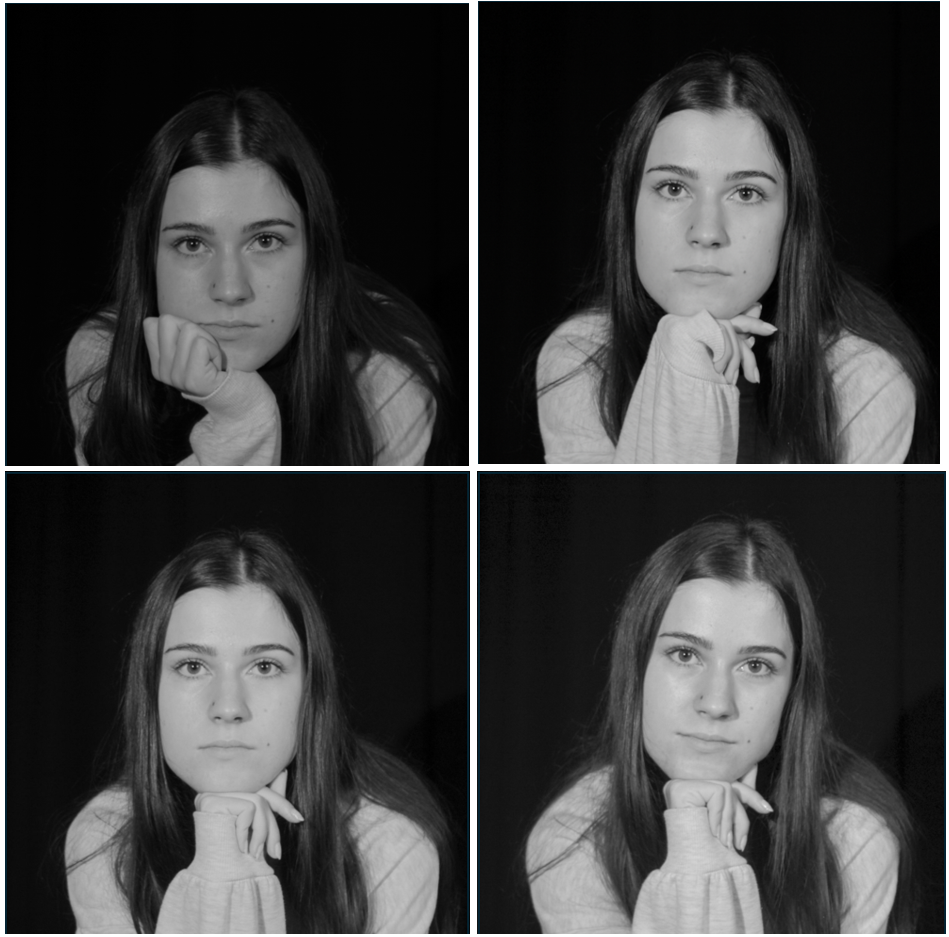
After experimenting with many different facial expressions, as well as different lighting, I am happy with these final outcomes as I like how there is a variation of different moods. We used soft lighting and a black background to create a dramatic affect, so that all the focus is on the subject.